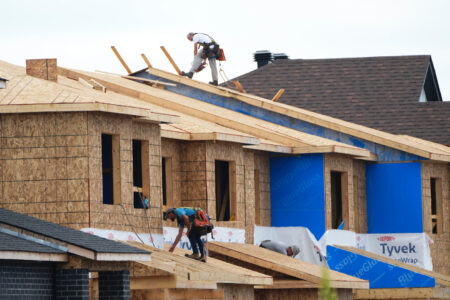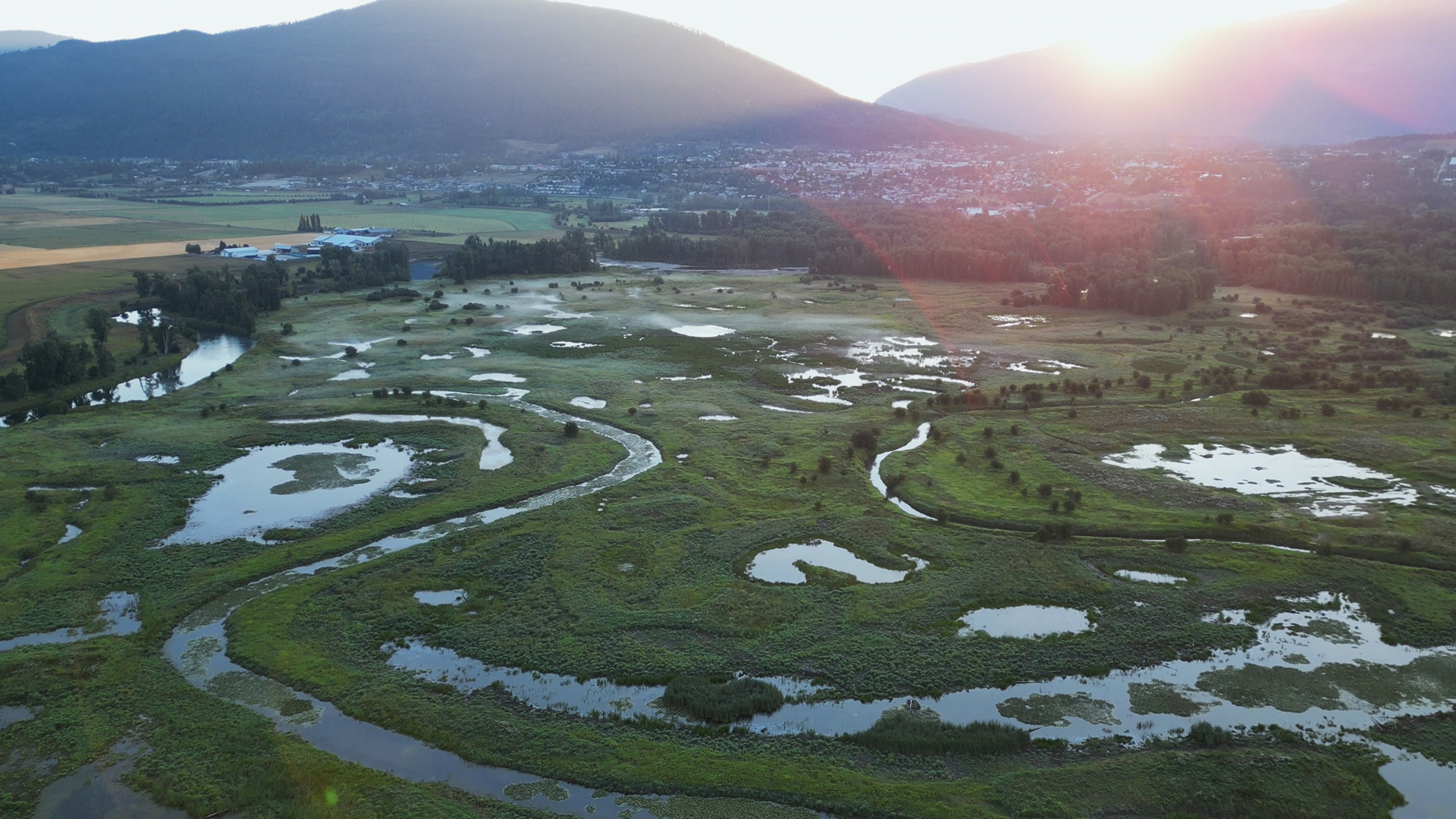
When governments and nonprofits speak about climate action, they usually punctuate their presentations with a familiar collage of rapid transit systems, solar panels, wind turbines and heat pumps.
But other options – nature-based solutions – have been around for a long time and are now getting the attention they deserve. Nature-based solutions involve protecting and restoring forests, wetlands and shorelines, planting trees in urban areas and/or engineering bioswales, rain gardens and green roofs.
Public and private sector leaders are increasingly recognizing their value, but siloed approaches and fragmented knowledge tend to emphasize ad-hoc individual projects rather than wider systems-based approaches.
Natural and green infrastructure, capital and climate solutions, low-impact design, green space, biodiversity corridors, and a host of other natural assets showcase the values associated with these solutions. However, considering their implementation through a singular lens or objective reduces their value in solving diverse goals and underestimates the impact they could have.
To help change that narrative, ACT – Action on Climate Team at Simon Fraser University has launched the natural solutions initiative (NSI), which includes an extensive scan of existing scholarship and practice. The result is a three-part framework aimed at bringing greater coherence to nature-based solutions in Canada.
Protecting humans and biodiversity
The World Conservation Congress defines nature-based solutions as actions that protect, sustainably manage and restore natural or modified ecosystems; that address societal challenges effectively and adaptively; and that simultaneously provide human well-being and biodiversity benefits.
While technological climate solutions such as heat pumps are crucial, protecting nature and prioritizing nature-based solutions help buffer communities against increasingly frequent and severe climate impacts with minimal upfront and operating costs, all while delivering myriad additional benefits. At the landscape scale, working with nature also offers important opportunities to engage with Indigenous knowledge and practices across territories that are increasingly impacted by climate changes.
Nature-based solutions buffer communities against increasingly frequent and severe flooding, and heat impacts, by absorbing excess water and heat. They also mitigate emissions by pulling carbon dioxide out of the atmosphere and releasing oxygen back into it, along with a multitude of other benefits.
In 2019, the UN Intergovernmental Science-Policy Platform on Biodiversity and Ecosystem Services estimated that nature-based solutions could provide 37 per cent of the emissions reductions needed until 2030 to achieve the targets of the Paris Agreement.
The most recent Intergovernmental Panel on Climate Change report (2023) noted that curbing the loss of natural areas is one of the two most effective strategies to reduce global greenhouse gas emissions, along with scaling renewable energy technologies.
In addition, a 2022 report by the International Federation of Red Cross and Red Crescent Societies and the World Wildlife Fund (WWF) concluded that nature-based solutions could reduce the intensity of climate hazards globally by 26 per cent – and that is considered a conservative estimate.
Wetlands, for example, are natural assets that retain and filter excess stormwater and recharge aquifers, while also hosting a rich and diverse number of species. Trees in urban areas help to moderate heat, filter pollutants and improve air quality, as well as increase habitat and biodiversity, all while improving residents’ well-being.
New funds, connected approach
As the evidence grows about the beneficial impact of nature-based solutions, governments in several countries, including Canada, are responding with both new policies and funding. In 2023, Ottawa committed $4 billion to natural infrastructure over four years via its natural climate solutions fund.
While this support is exciting and a move in the right direction, we need to make sure it’s used effectively by connecting nature-based solutions to one another and to the broader ecological processes that sustain species, communities and economies.
For example, the City of Surrey’s climate change action strategy (2023) aims to protect, restore and connect natural areas and ecosystems at the broader community and watershed scale, while improving ecological and climate resilience using green infrastructure at the smaller neighbourhood and parcel scales.
The strategy also notes how each nature-based solution affects climate adaptation, emissions, equity, health and prosperity.
Since its founding in 2022, the NSI has studied more than 100 examples of nature-based solutions in both scholarship and practice nationally and internationally to better understand approaches, metrics and best practices across watershed, community, neighbourhood and parcel scales.
We found numerous public and private sectors and organization are embracing nature-based solutions within numerous disciplines. For example, engineers, biologists and urban planners are applying them to support sustainable service delivery, climate action, biodiversity and even equity.
Unfortunately, we also found that siloed approaches and nomenclature have minimized, or prevented, the potential of nature-based solutions. As a result, they are not being planned in a way that provides for a coherent ecosystem and the multitude of benefits that stem from that.
Our team’s NSI summary outlines a framework that brings a nested coherence to nature-based solutions planning across three different, yet complementary, approaches:
The ecosystem-based management approach monitors and enhances the baseline and threshold conditions of ecosystem health and resilience of a given watershed or territory over time.
The natural asset management approach emphasizes the protection and restoration of forests, wetlands, riparian areas, etc. to support ecosystem services at the community scale.
The blue-green infrastructure approach seeks to enhance existing assets such as wetlands or to implement engineered assets, such as bioswales or green roofs, at the neighbourhood or parcel scale.
Building community resiliency with natural gifts
Our communities rely on nature’s gifts such as water and soil, services such as stormwater absorption and retention, and species richness for ecosystem functions like pollination. We must begin to recognize that we part of a larger system of dynamic and interdependent ecological processes. Our own health and community and economic resilience depend on it.
The federal government’s nature-based climate solutions advisory committee writes: “Indigenous holistic worldviews of the connectedness and reciprocity of people, communities, atmosphere, and ecosystems should be considered as a foundation to any [Natural Climate Solutions Fund] programs. Nature-based solutions provide meaningful and necessary opportunities to centre Indigenous knowledge and rights, and to advance innovative co-governance approaches.”
Shifting beyond communities and addressing ecosystem health and resilience within the broader watersheds, territories and landscapes where we reside, new worldviews and nature-based solutions have the potential to build meaningful co-governance arrangements with First Nations.
The NSI is presently testing its nested, three-part framework with, and for, partner communities. We’re working to better understand the values associated with healthy and resilient natural systems, as well as the benefits, costs and tradeoffs associated with protecting ecological processes and enhancing ecosystem services.
For example, we are working with the City of Port Moody, B.C., to link its natural asset management planning (valued conservatively at $377 million) to its forthcoming green infrastructure strategy. We hope to collaborate with local First Nations and the regional government to better understand baseline health indicators in the watershed.
As communities and practitioners begin to access newly available federal funding, we look forward to helping ensure these projects support regional and community climate resilience while capturing a rich range of potential benefits and potential trade-offs over time.
As our NSI framework gets tested with, and for, community partners, we will be producing resources and tools to help funders and practitioners alike to put nature back into nature-based solutions.
The goal is to develop systemic and cohesive solutions that build the health and resilience of the ecosystems upon which we all depend as a crucial strategy for building low-carbon, resilient, and sustainable regions and communities.
Author’s note: Special thanks to Dr. Chaeri Kim, Chloe Repka, Anwen Rees, Lauren Vincent, Deborah Harford and collaborating partners.








